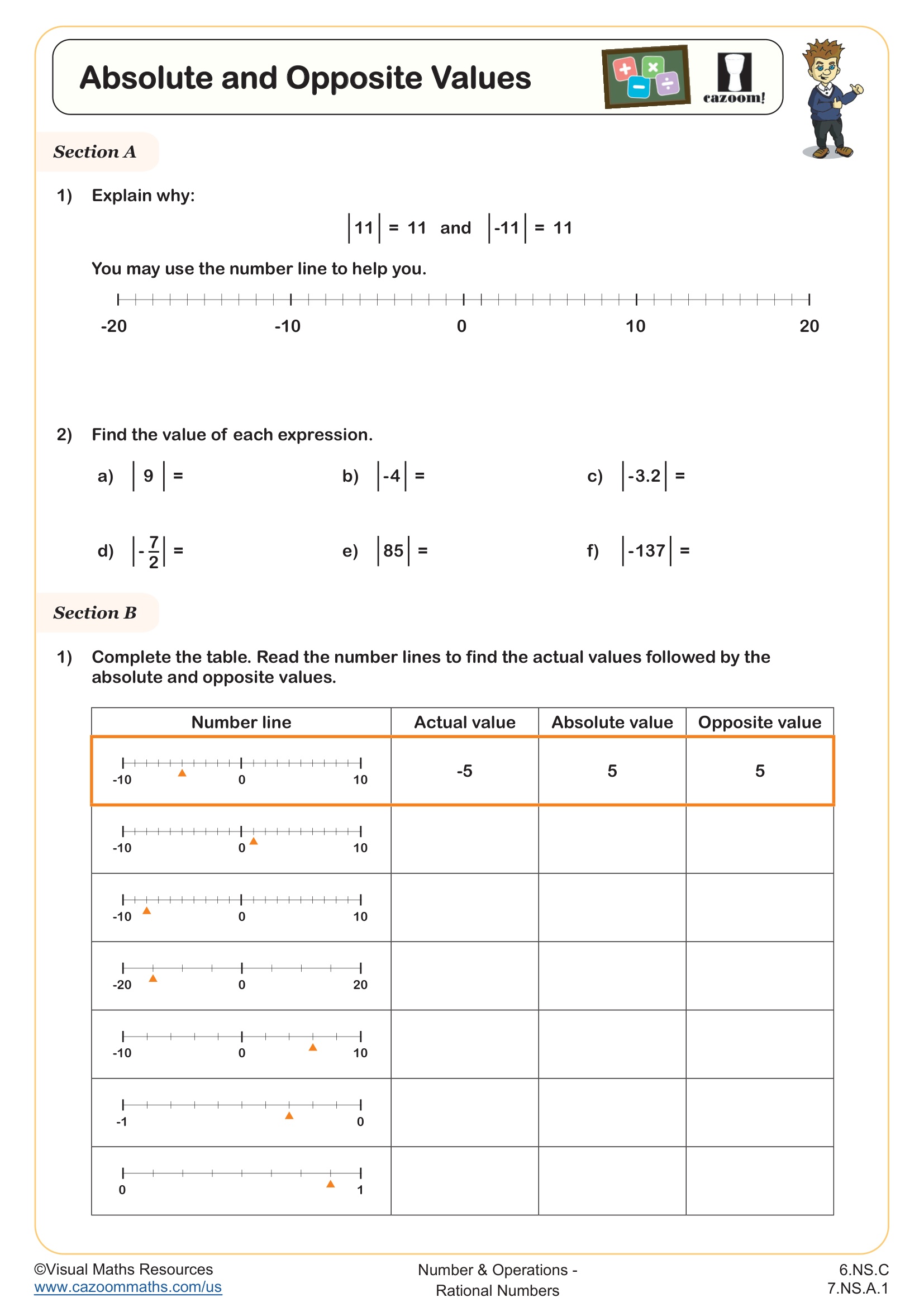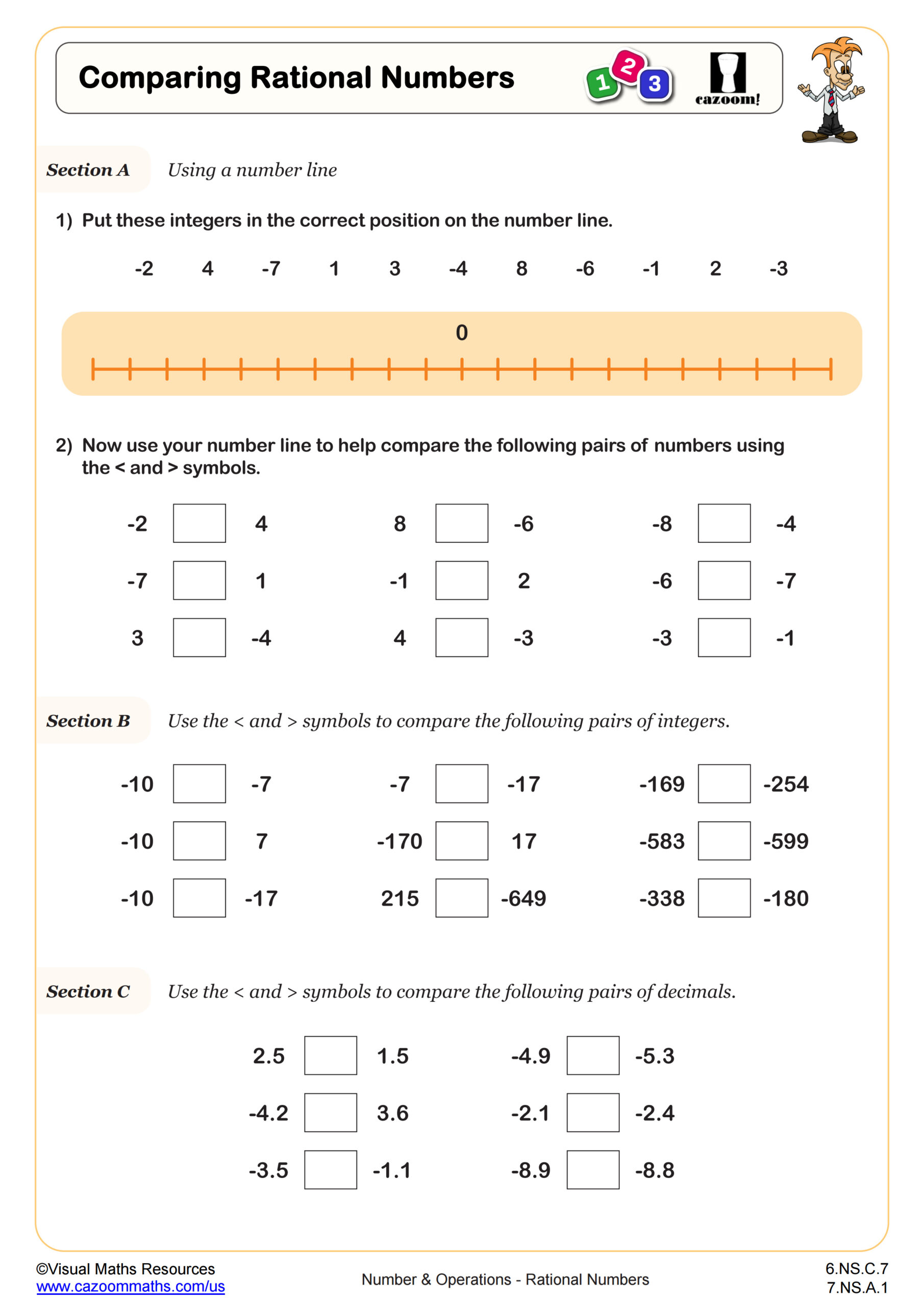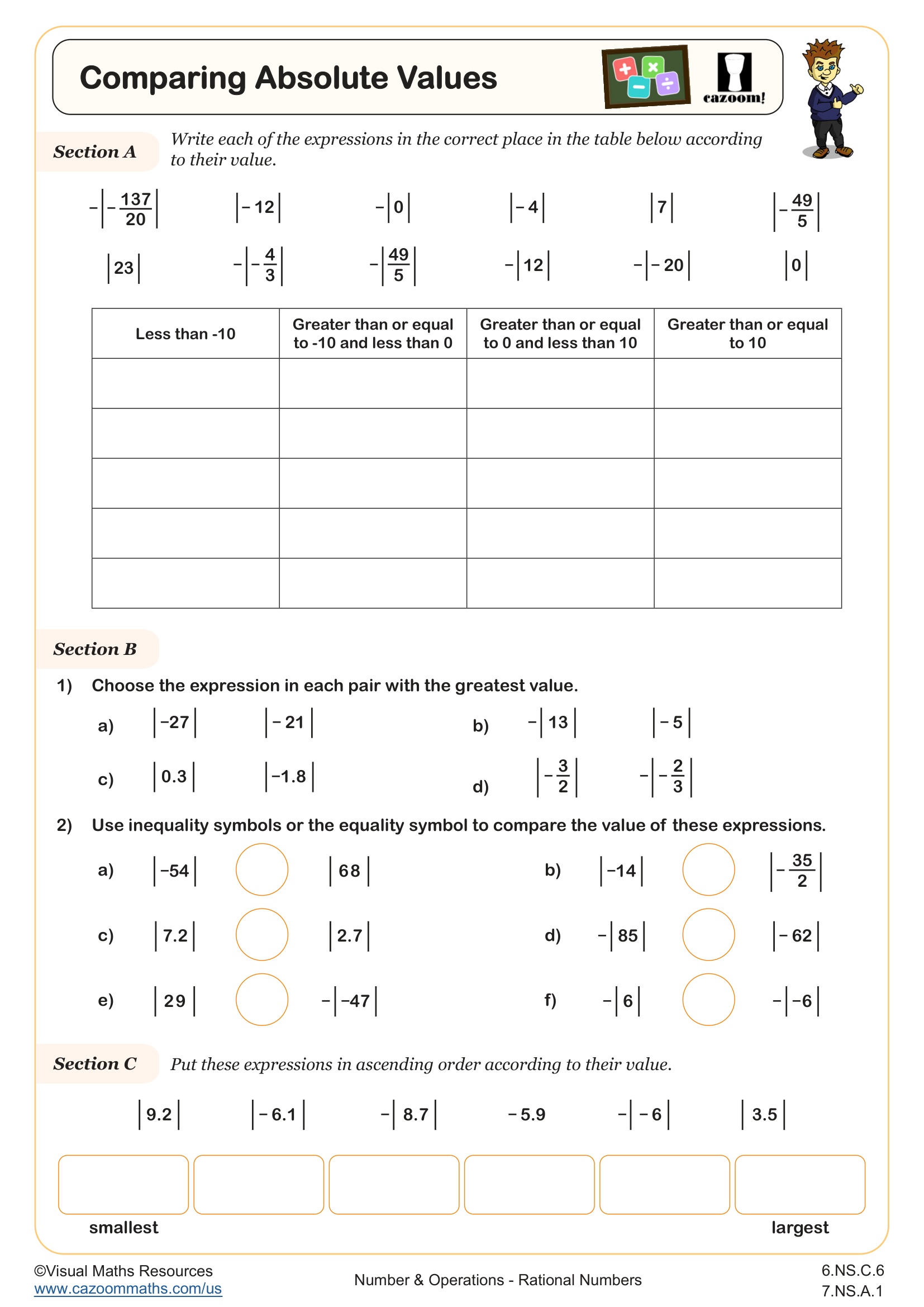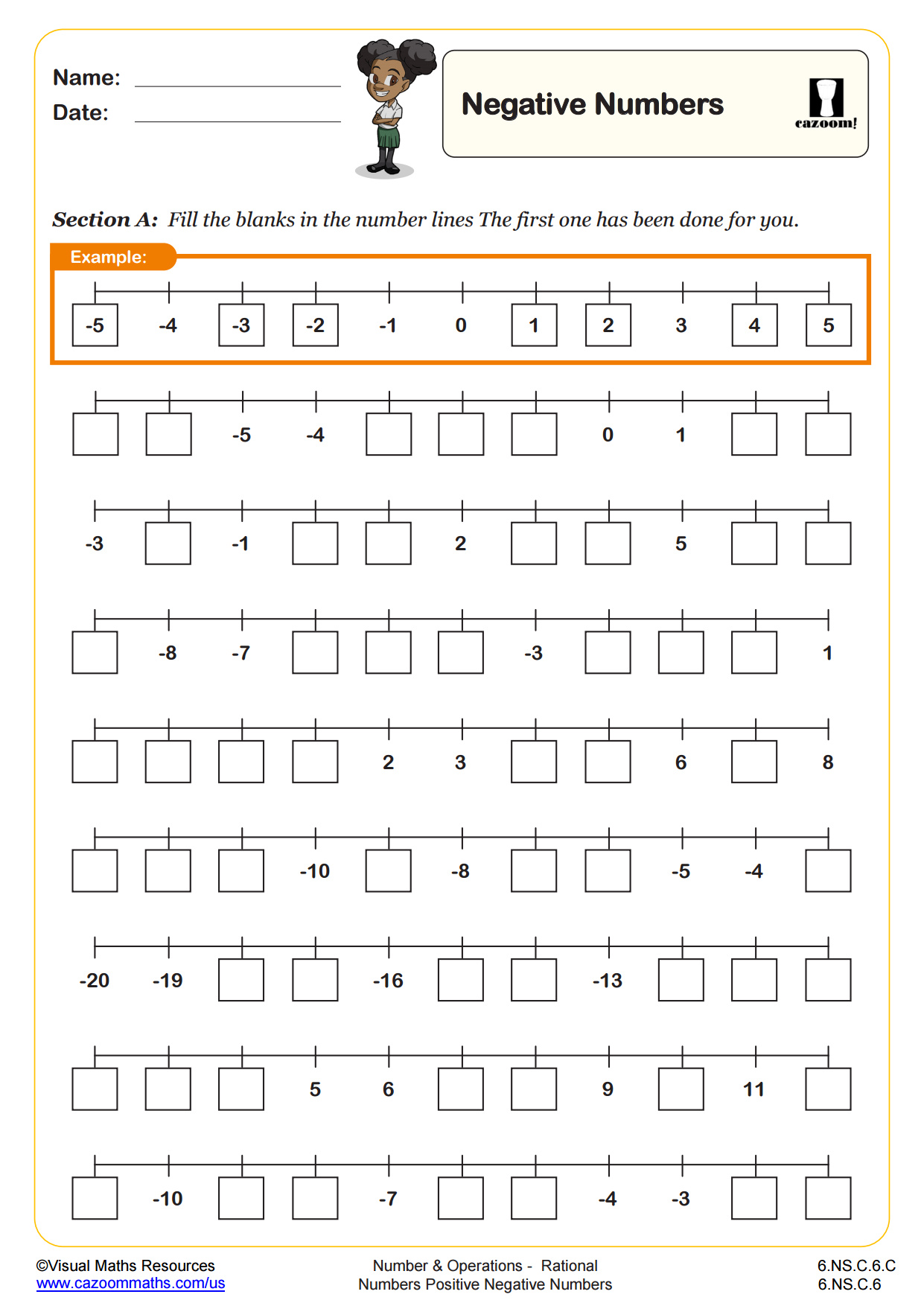Loading...
Absolute and Opposite Values WORKSHEET
Apply and extend previous understandings of addition and subtraction to add and subtract rational numbers; represent addition and subtraction on a horizontal or vertical number line diagram. a. Describe situations in which opposite quantities combine to make 0. For example, a hydrogen atom has 0 charge because its two constituents are oppositely charged. b. Understand p + q as the number located a distance |q| from p, in the positive or negative direction depending on whether q is positive or negative. Show that a number and its opposite have a sum of 0 (are additive inverses). Interpret sums of rational numbers by describing real-world contexts. c. Understand subtraction of rational numbers as adding the additive inverse, p – q = p + (–q). Show that the distance between two rational numbers on the number line is the absolute value of their difference, and apply this principle in real-world contexts. d. Apply properties of operations as strategies to add and subtract rational numbers.
Absolute and Opposite Values WORKSHEET DESCRIPTION
Discover the world of absolute and opposite values with this worksheet which provides clear explanations and engaging exercises to help learners understand why the absolute value of a number is always positive and how to find the opposite value.
To begin, learners will explain why the absolute value of 11 and -11 is equal to 11 before finding the value of expressions such as |9| and |-137|.
In section B, students are asked to read values from numbers lines stating their absolute and opposite values and using given absolute and opposite values to find an actual value.
Section C will see students evaluate statements such as “There are two numbers with the same absolute values.” and consider expressions with a negative sign before the modulus notation, for example: -|16|.




